Let's Save the World A Lot: #AASL Fan Activism Workshop Recap
Last Thursday night, I attended the workshop “From Stories to Action: Inspiring Heroes for Our Own World” at the American Association of School Librarians conference. The workshop was presented by Janae Phillips, Director of Leadership & Education for the Harry Potter Alliance. It was the highlight of the conference for me. I left energized and eager to get involved.
The event began with an introduction to HPA - who they are and what they do. Their tagline is “We turn fans into heroes.” Their focus is on fan activism, which they define as “engaging in activism through storytelling and fandom by drawing parallels between popular media and real world social issues.”
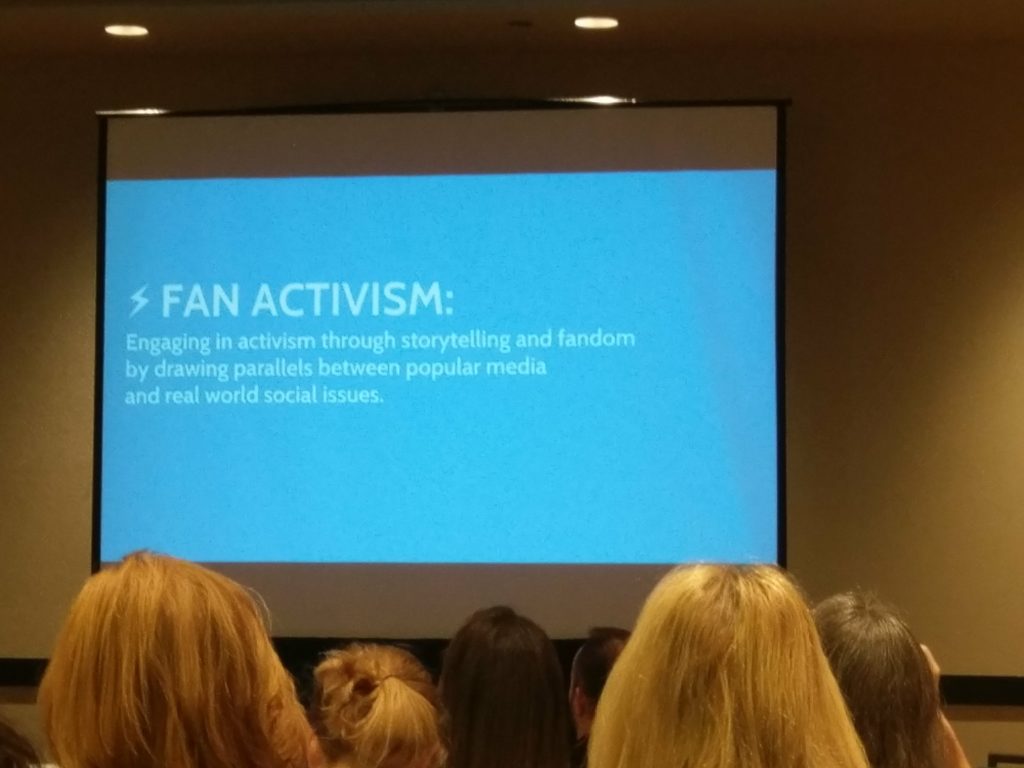 Janae shared her background in leadership development, describing the social change model of leadership development as the model she used:
Janae shared her background in leadership development, describing the social change model of leadership development as the model she used:
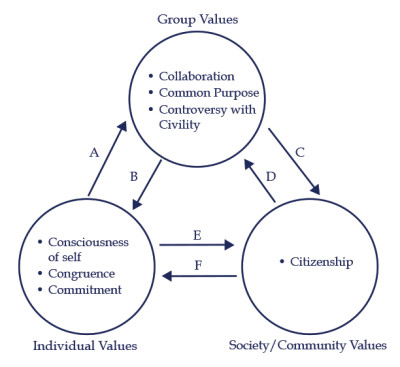
With a quick Google I discovered that this model is commonly used for student leadership development in higher education. If you want to read about it, there’s a lot of scholarly literature out there. From what I can tell, it was first introduced in this book.
Janae then pointed out that most of the stories that inspire modern fandoms hew pretty closely to Joseph Campbell’s Hero’s Journey:
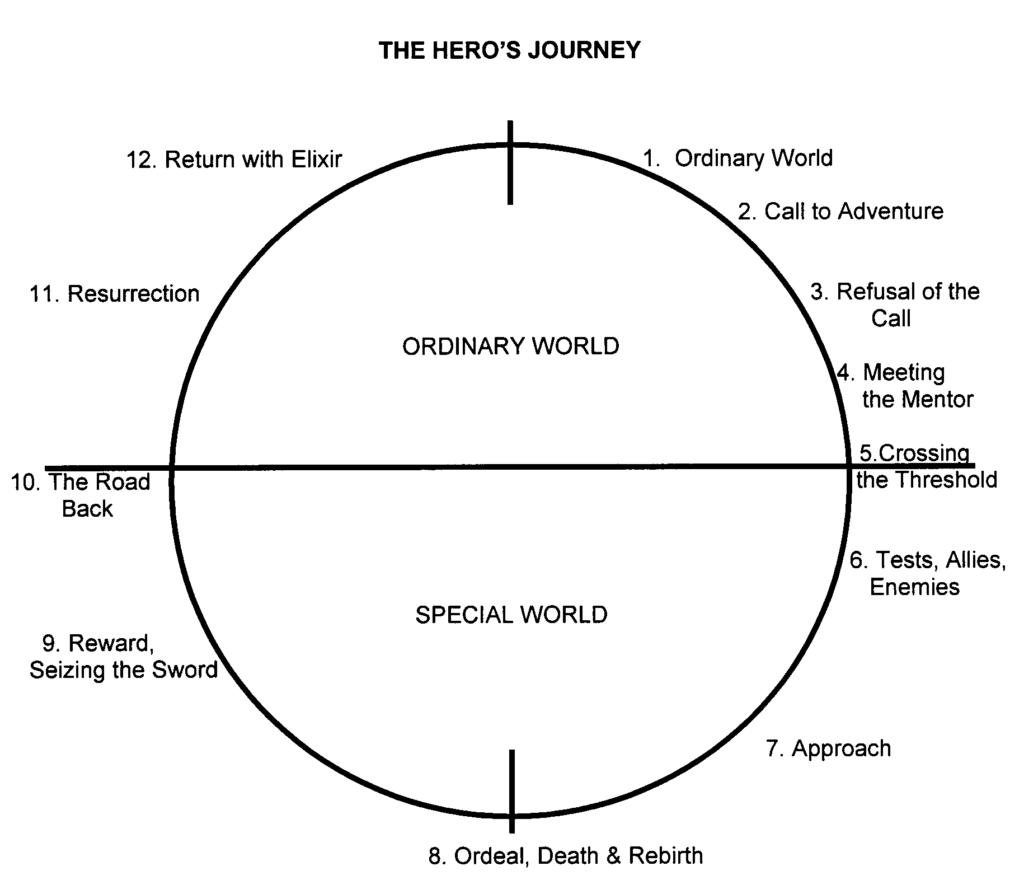
You can read more about this in so many places, but I hear people talk about The Hero with a Thousand Faces the most. I’m ashamed to say I’ve never read it. Maybe I’ll try and squeeze it into my dissertation literature review somehow. (Here’s the part where I admit that this Hero’s Journey aligns closely with Western literature, and naturally has some limitations with respect to its value for analyzing stories cross-culturally.)
Janae introduced the idea that literally overlaying the leadership model on the Hero’s Journey illustrated the promise of using the power of stories to create activist leaders. You can line up the Individual part of the model with the beginning of the journey, see how tests, allies, and enemies might align with group values, and then the Society/Community part aligns with the resurrection and return. (I couldn’t really see if this is how Janae’s version lined up, but I think it probably is.)
Now that we had a theoretical foundation for connecting stories and social change, Janae introduced the innovation adoption curve and discussed the fact that most activist efforts target innovators & early adopters, leaving middle and late adopters out. These individuals - who might be ready to be activists, if they are just introduced to it the right way - can be approached via their own fandoms.
[caption id=“attachment_3288” align=“aligncenter” width=“640”]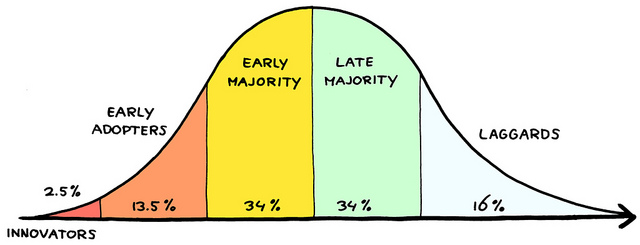 Janae’s version had adorable Harry Potter theming with the Dark Mark over on the Laggards end. I got this version from Jurgen Appelo of management30.com.[/caption]
Janae’s version had adorable Harry Potter theming with the Dark Mark over on the Laggards end. I got this version from Jurgen Appelo of management30.com.[/caption]
She likened middle and late adopters to Neville Longbottom, who at the beginning of the Harry Potter series is overwhelmed and not really sure how to help in the fight against Voldemort, but by the end of the series is protecting the world with as much strength as any of his peers.
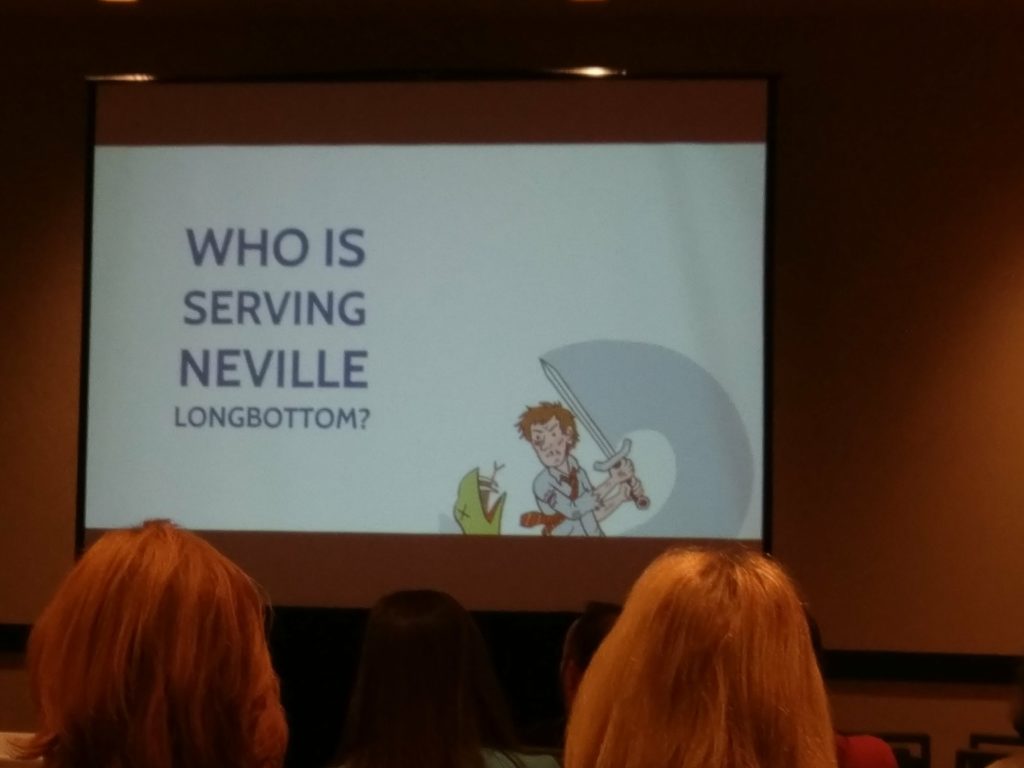
Janae explained that someone who feels they lack the expertise to have a grounded discussion of a social justice issue like racism might be more ready to have that conversation if it is grounded in their own area of expertise - their fandom. She offered here the example of using how Muggle-born and the children of Muggle/Wizard pairings are treated in Harry Potter to get at the idea of racism.
She also pointed out that stories can serve as inspiration for specific actions. For example, in the world of Harry Potter, eating chocolate is an antidote to a dementor attack. Harry Potter-themed chocolate is a real-world product. Janae shared the “Not in Harry’s Name” campaign, in which the HPA lobbied Warner Brothers to ensure all HP-branded chocolate is ethically sourced:
Next up was the workshop part. We divided into groups by fandom (Buffy, Hamilton, Star Wars, HP). First we discussed WHY we loved the texts from these fandoms. THEN we brainstormed possible activist projects that could come out of those. (I was the one who kept calling for a Buffy group, and I got my wish.)
We closed with a sharing, a recap, and information about how we can get involved in the HPA.
Janae finished with a couple of key points that really resonated with me and made me feel energized about my work as a scholar looking at connected learning and culturally sustaining pedagogy, finding ways librarians can leverage youth interests and culture to learn, grow, and make the world a better place.
First, JOY itself is an act of resistance. The bad guys, whomever they may be, want us to be down and defeated. Doing things that make us joyful is part of resisting them.
Second, connecting your activism with something you love gives you the energy to keep going. Social justice work is hard. It’s demanding and exhausting. It’s easy to feel like it’s too hard and we should quit. But if your activism is grounded in a work of art you enjoy and a community of other people who also love that art, that can give you what you need to stick with it.
Finally, I want to close with a question that came up in my group: how do you know which fandom to have motivate activities for the youth you’re serving? The answer, of course, is whichever fandom excites them. You don’t have to know about Dementors or Neville or Muggles or House Elves to find ways to connect Harry Potter to activism, because people who love it, when talking about it, will share with you things that will naturally fit. Let kids share with you what they’re into - find ways for them to bring it in - and as you learn about it, you will find ways to help them think through its connection to the real world and how they can use that to make the world better. To decrease worldsuck, if you will.